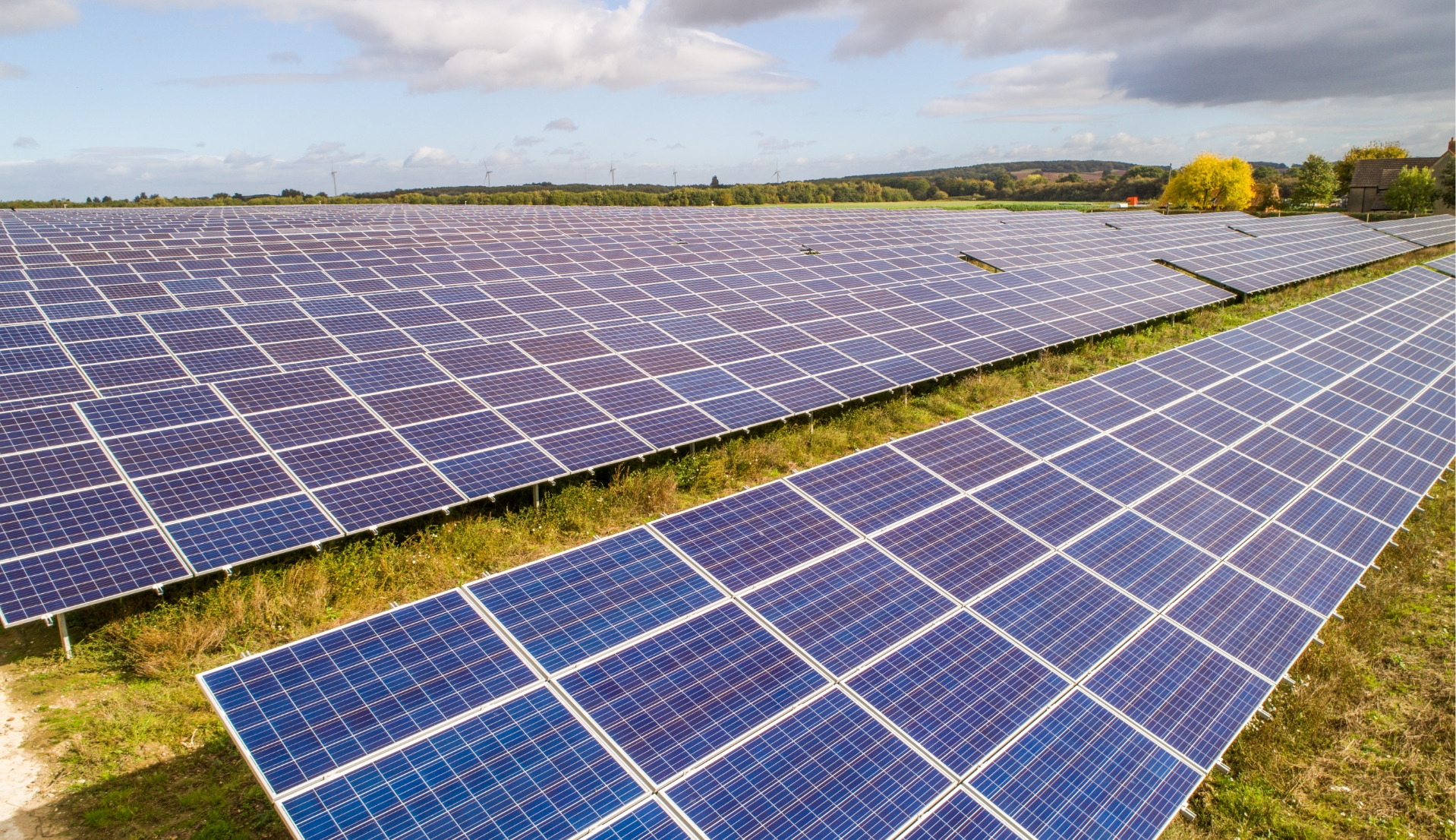Future Market Outlook

Solar is one of the cheapest and most sustainable forms of energy generation
Solar
Solar is one of the cheapest and most sustainable forms of energy generation which can be deployed at speed. As outlined in the Electricity Generation Costs 2023 report published by the UK Department for Energy Security and Net Zero, ground mount solar PV has one of the lowest levelized costs of electricity (“LCOE”) of all renewable generation technologies. The UK has one of the most mature solar markets in the world with c.16GW currently deployed across its shores. The UK Government continues to drive forward its ambitions to achieve its solar deployment target of 70GW by 2035, illustrating strong support for solar alongside the recently established UK Solar Taskforce to advise on this strategy. A select number of market-leading companies were invited to participate in the UK Solar Taskforce, including NextEnergy Group represented by Ross Grier.
The UK has one of the most mature solar markets in the world with c.16GW currently deployed across its shores. The UK Government continues to drive forward its ambitions to achieve its solar deployment target of 70GW by 2035, illustrating strong support for solar alongside the recently established UK Solar Taskforce to advise on this strategy. A select number of market-leading companies were invited to participate in the UK Solar Taskforce, including NextEnergy Group represented by Ross Grier.
The UK National Grid’s Future Energy Scenarios’ (“FES”) recent 2023 report also illustrates the need for, and importance of, solar generation across all four of its scenarios in achieving net zero by 2050. At a global scale, the IEA World Energy Outlook 2023 found, and continues to predict, that solar PV will be the leading renewable energy in the clean energy transition with more than USD1 billion currently being spent on solar deployment per day.

Energy Storage
Energy storage is a highly complementary technology to solar PV and, as such, it is a key component of NESF’s strategic endeavours. It provides multiple diversification benefits, ranging from a technology, revenue, and geographic perspective by capturing the benefits of solar’s predictable generation profile and the flexibility of energy storage assets to derive attractive revenues.
It is evident that energy storage will play a critical role in achieving the UK’s legal commitment to meet net zero by 2050. NextEnergy Group, alongside others across the industry, continues to work with the Government, regulators and network operators to bring forward new connections.

The Company is strategically placed and prepared to take advantage of energy storage opportunities in its next phase of growth, particularly under the guidance of Dario Hernandez, Head of Energy Storage, and Christopher McKaig, Head of Grid Connections, both of whom have a combined total of 30 years’ experience.
Energy storage is crucial to meet the UK Government’s decarbonisation targets for the electricity grid by 2035, and to provide support to a grid that is predicted to have a high proportion of renewables. The FES’s 2023 report highlights that co-located solar farms with grid-scale battery storage are needed to aid in mitigating connection issues and in achieving net zero by 2050, in its leading the way scenario.
The Company is encouraged by the recent progress made by the UK National Grid as it continues to make improvements in the dispatching capability of batteries in the Balancing Mechanism and the introduction of additional reserve products.

Power Price
The past few years have seen unprecedented volatility in energy markets, including widespread declines caused by the COVID-19 pandemic followed by unprecedented peaks driven by Russia’s invasion of Ukraine. The energy market sector has started to witness a normalisation in short-term power prices. Lower commodity prices have been influenced by above-average gas storage levels, milder weather across the 2023 winter season and sustained reductions in demand. Power prices in the medium and long term are expected to fall due to the increased deployment of renewables to reach the UK Government’s net zero targets, and the assumed CAPEX costs. This expectation is consistent with the Company’s predicted forecasts. The Company is prepared for this by continuing to strike a balance for longer term price risk mitigation, through its power price hedging strategy.

UK Macroeconomic environment
The market landscape over the past six months has been characterised by stability in the Bank of England Base Rate, which has remained relatively high at 5.25%. This stability has influenced interest rates to follow a similar trajectory. Meanwhile the UK Gilt market continues to attract capital in the context of the elevated interest rates, limiting the availability of capital for investment companies in the renewables sector. With interest rates being relatively high, the last year has presented challenging equity market conditions, with the combined impact of interest rate increases and cost of living considerations presenting challenging equity market conditions, and where investor redemptions across the renewables sector have led to an oversupply of shares, in comparison to demand, leading to discounts to NAV across the renewables industry.